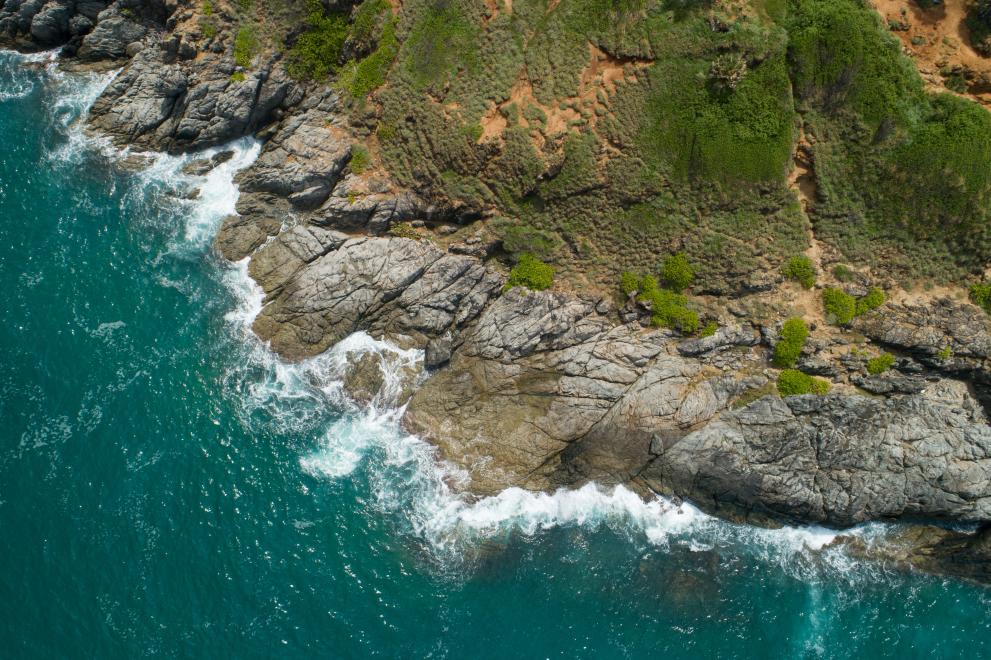
The study uses data on the sea-level and cliff-retreat rates from the last 8000 years at Bideford and Scalby, UK, alongside predicted sea-level rise and cliff retreat-rate data until 2100.
Climate change is accelerating sea-level rise (SLR) and, with coastal urbanisation increasing worldwide, cliff erosion on rocky coasts is an immediate hazard to human lives, property and infrastructure in these locations. Rock coasts make up more than 50 per cent of the world’s coastline, and are themselves evidence of ongoing erosion. Sea-level rise is expected to increase storm frequency and result in wave energy moving further inshore to erode coastal cliffs, but little is known of the specific impacts of this.
Despite the importance of understanding the effect of sea-level rise on rocky cliffs, the stability of rock coasts has been largely neglected, and the expected acceleration of cliff erosion following sea-level rise has not been previously studied with observed data using coastal evolution models. This study is the first to use data from rocky coastline sites to model the impacts of accelerated sea-level rise on coastal cliff retreat rate for the year 2100. This emerging risk of accelerated rocky cliff erosion is important to understand – to enable swift societal and political response to mitigate its impacts on coastal communities.
The researchers used a coastal evolution model1, incorporating digital surface topography and radioisotope data from rock samples (a method of dating rocks and minerals) at a site, to quantify cliff retreat rates for the last 8000 years (before present, where present day is 2000). They then used this calibrated model, but included sea-level rise projections from the UK Climate Projections 2018 (UKCP18), to forecast sea-level rise to 2100. The study focuses on two coastal sites – Bideford, north Devon and Scalby, north Yorkshire. The researchers collected rock samples from each site and analysed them to work out the cliff retreat history. Sea-level rise histories specific to each site were constructed using the radioisotope rock data and modelling approach.
The researchers added future cliff retreat rates to the model, using the Intergovernmental Panel on Climate Change’s predictions of greenhouse gas emissions through Representative Concentration Pathways (RCPs). They modelled minimum, medium and maximum rates for each (RCP2, RCP4, and RCP8). They also incorporated an average number of random erosion events, where storms, for example, cause larger-scale damage – to accurately identify the long-term future trend of cliff retreat rates for the two sites.
Both Bideford and Scalby were found to have a similar sea-level rise history, where the sea has constantly risen from 8000 years ago, when it was around 16 metres (m) lower than today. The results of the model analysis showed that cliff retreat rate is more sensitive to sea-level rise rate, i.e. how quickly the level rises over time, than the absolute amount of sea-level rise. The model predicts that these two historically stable UK coastal sites will see cliff retreat rates accelerate by at least 3–7 times the present rates under current projections for sea-level rise. This equates to cliff positions retreating by 10–14 m at Bideford and 13–22 m at Scalby.
The researchers note that cliff retreat rates of this speed have not been seen over the last 3–5000 years at these sites and are due to sea-level rise driven by climate change causing greater wave erosion – thereby increasing cliff retreat rates. This suggests climate change will have a direct impact on risks associated with coastal hazards in the coming century and beyond – even on historically stable coastlines. The researchers suggest that rocky coastlines should now be included in future planning for global climate change response, for example in coastal protection programmes.
Footnotes:
- Coastal evolution models can simulate fundamental cause–effect relationships in coastal systems.
Source:
Shadrick, J. R., Rood, D. H., Hurst, M. D., Piggott, M. D., Hebditch, B. G., Seal, A. J., and Wilcken, K. M. (2022) Sea-level rise will likely accelerate rock coast cliff retreat rates. Nature Communications, 13(1). Available from: https://doi.org/10.1038/s41467-022-34386-3
To cite this article/service:
“Science for Environment Policy”: European Commission DG Environment News Alert Service, edited by the Science Communication Unit, The University of the West of England, Bristol.
Notes on content:
The contents and views included in Science for Environment Policy are based on independent, peer reviewed research and do not necessarily reflect the position of the European Commission. Please note that this article is a summary of only one study. Other studies may come to other conclusions.
Details
- Publication date
- 29 March 2023
- Author
- Directorate-General for Environment

